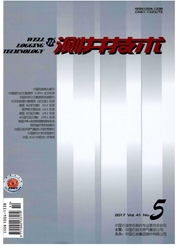

 中文摘要:
中文摘要:
Based on the electric double layer (EDL) theory and the momentum equation governing the electroosmosis flow, this paper presents an analytical solution to the periodical electroosmosis with a parallel straight capillary bundle model of reservoir rocks to reveal the microscopic mechanism of the electroosmotic flows in rocks. The theory shows that both the frequency dispersion characteristics of the macroscopic electroosmotic Darcy velocity in unsealed rocks and the electroosmotic pressure coefficient in sealed rocks depend on the porosity and electrochemical properties of reservoir rocks. The mathematical simulation indicates that the distribution of the periodical electroosmotic velocity is wavelike in the rock pore. The greater the porosity is, the greater electroosmotic the Darcy velocity and the smaller electroosmotic pressure coefficient are generated. The module values of the electroosmotic Darcy velocity and the electroosmotic pressure coefficient increase with the decreasing solution concentration or the increasing cation exchange capacity without affecting the phase of the electroosmotic Darcy velocity.
 英文摘要:
英文摘要:
Based on the electric double layer (EDL) theory and the momentum equation governing the electroosmosis flow, this paper presents an analytical solution to the peri- odical electroosmosis with a parallel straight capillary bundle model of reservoir rocks to reveal the microscopic mechanism of the electroosmotic flows in rocks. The theory shows that both the frequency dispersion characteristics of the ma~roscQpic electroosmotic Darcy velocity in unsealed rocks and the electroosmotic pressure coefficient in sealed rocks de- pend on the porosity and electrochemical properties of reservoir rocks. The mathematical simulation indicates that the distribution of the periodical electroosmotic velocity is wave- like in the rock pore. The greater the porosity is, the greater electroosmotic the Darcy velocity and the smaller electroosmotic pressure coefficient are generated. The module values of the electroosmotic Darcy velocity and the electroosmotic pressure coefficient increase with the decreasing solution concentration or the increasing cation exchange ca- pacity without affecting the phase of the electroosmotic Darcy velocity.
 同期刊论文项目
同期刊论文项目
 同项目期刊论文
同项目期刊论文
 期刊信息
期刊信息
